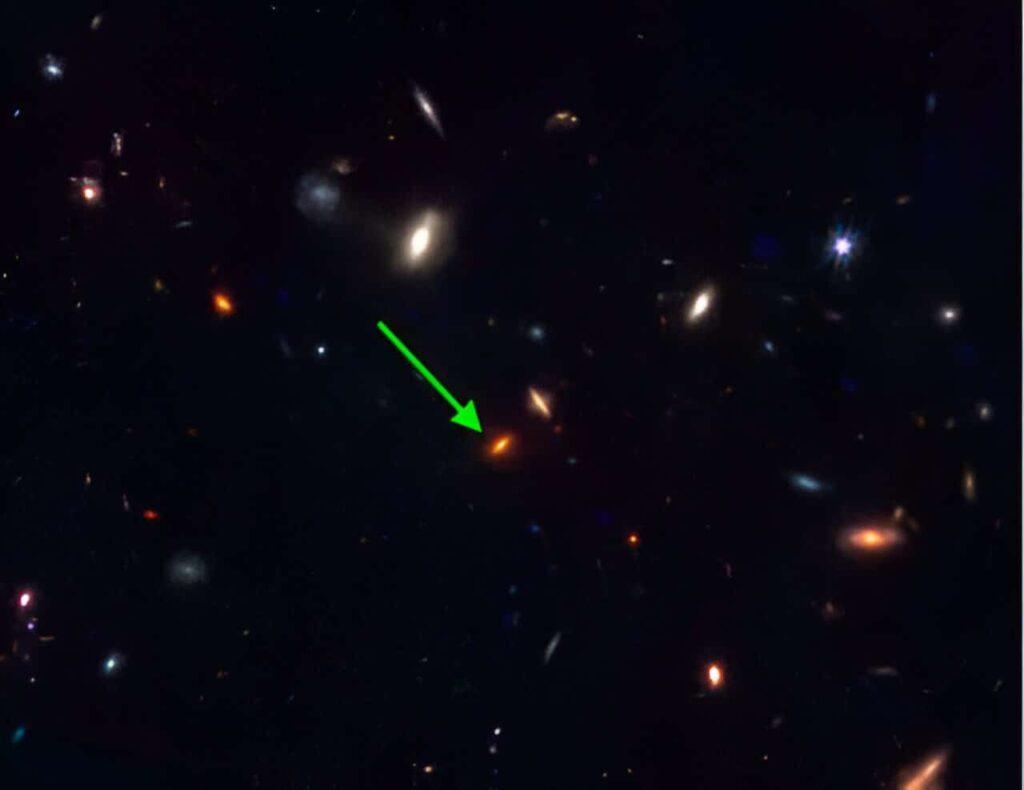An international team of researchers has reported the discovery of an “impossible” galaxy at the edge of the observable universe. It has a much larger mass than is possible according to current theories.

The discovery was made thanks to the James Webb Telescope (JWST). It managed to discover the massive galaxy JWST-7329, which existed in the early universe. Its mass is four times that of our Milky Way.
Astronomers were interested in the discovery. By measuring the redshift, they determined that the light emitted by JWST-7329 took 11.5 billion years to reach the Milky Way. At the same time, its stellar population is unusually old for that era. It is 1.5 billion years old. Thus, the galaxy formed just 800 million years after the Big Bang.
This contradicts modern cosmological theories. The fact is that the formation of galaxies is largely determined by how dark matter is concentrated. The standard cosmological model assumes that the huge clumps of dark matter necessary for the appearance of massive galaxies should not have had time to form in the early universe.
Therefore, until recently, it was believed that at that time there should have been much fewer massive galaxies in the universe than now. But the JWST images show numerous such objects that existed just one to two billion years after the Big Bang. And this means that the existing theoretical models clearly need to be reworked.
According to https://www.swinburne.edu.au
Follow us on Twitter to get the most interesting space news in time
https://twitter.comne/ust_magazine


